It is not uncommon for babies to experience dry skin because compared to older children and adults, a baby’s skin is more sensitive and thinner.
Their skin also does not produce as many oils as the skin of an adult.
These factors put babies at a higher risk for skin dryness and chapping, especially in environments with dry air and during the winter months.
What is dry skin?
There are three layers to your skin. The epidermis is the top layer and it provides an important waterproof barrier between the external environment and your internal organs.
When your baby has dry skin, it is an issue somewhere in the epidermis.
Just below the top layer of skin is the dermis. This is where hair follicles, sweat glands, and connective tissue reside.
The subcutaneous layer is the deepest and it has connective tissue and fat. While the epidermis is the most involved when the skin is dry, these layers will function differently too as a result of dryness.
The skin becomes dry when it is not producing oils at a sufficient rate to keep the skin hydrated and supple.
When your skin is not producing enough oils, it can feel tight and uncomfortable. Tightness and dryness will occur anywhere on the body where there is insufficient oil production.
If the dryness of your baby’s skin becomes severe, it can feel tight, itchy, and rough. In some cases, the skin may also crack, bleed, and become flaky. When your skin is severely dry, little to no oils are being produced.
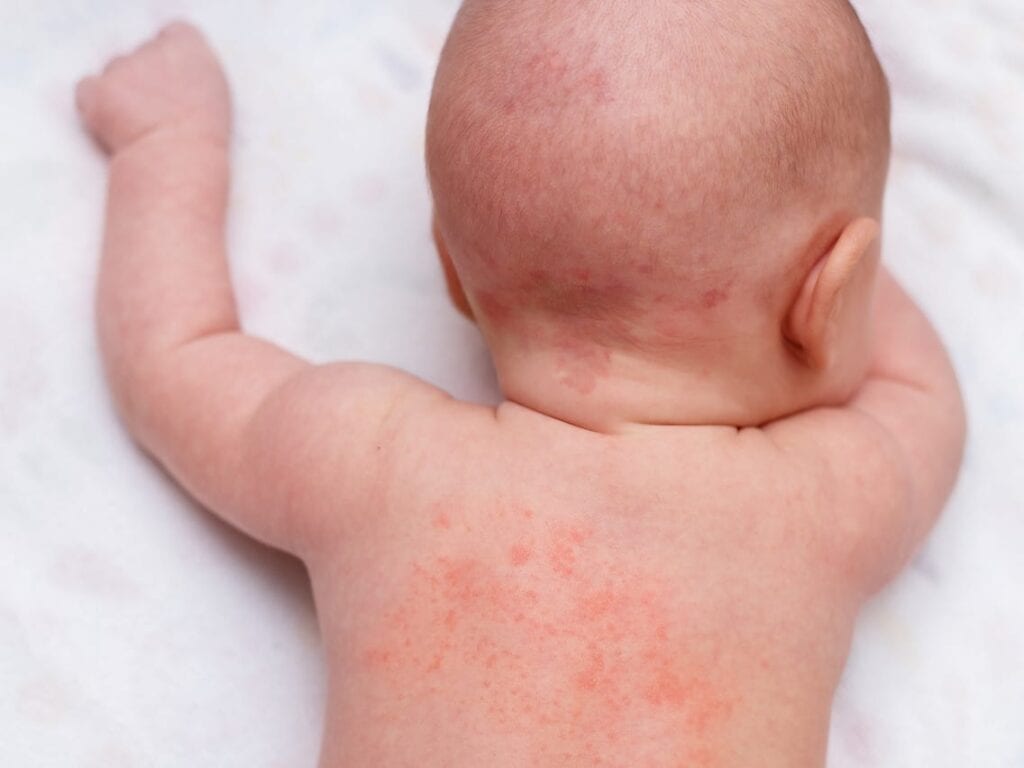
Baby dry skin causes
Most baby dry skin causes are things that you have control over. Weather is a common factor because cold or hot weather with limited humidity can cause skin dryness in babies.
Harsh soaps and bathing too often may also contribute to a baby’s skin dryness. Harsh soaps can remove the natural oils on your baby’s skin, making it drier.
Your pediatrician can give you guidance on how often to bathe your baby and the best types of soap to use.
Certain skin conditions might also contribute to a baby having dry skin. Examples include eczema and ichthyosis.
Eczema is the most common skin condition in children under 10 years of age. It is estimated that it affects approximately 10 percent of children.
Three months old is the average age of onset. In babies, the following symptoms are possible:
- Itching
- Red rash that may be weepy or raw
In babies one to six months old, it usually begins on their cheeks and can spread to other facial areas. Infants may also develop eczema on their outer legs and arms.
In most cases, both sides of the body are affected.
Ichthyosis describes a group of skin diseases that are genetic. It can affect any part of your baby’s body, but the bends in their legs and arms are typically not affected. In most cases, the condition is mild and can cause scaly, dry, and thickened skin.
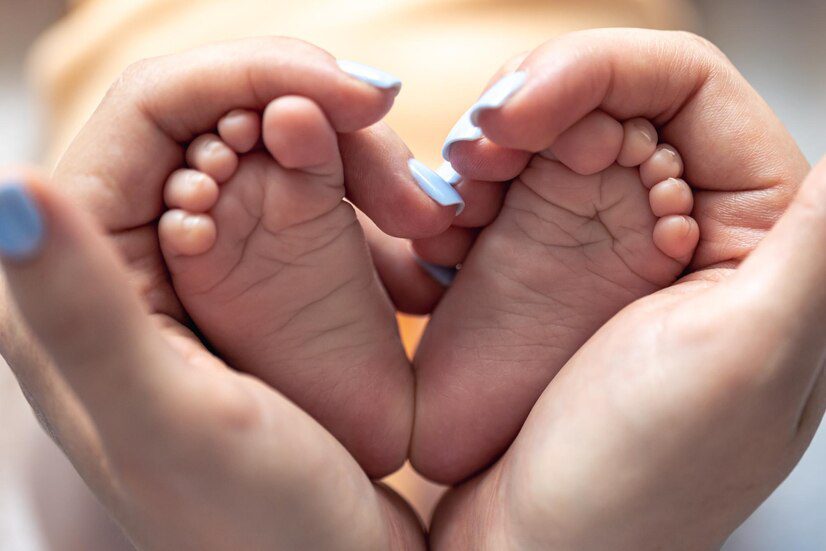
Newborn peeling skin
For up to two weeks after birth, the skin of a newborn can peel, and this is normal. It is often mistaken for severely dry skin.
However, when your baby is in the womb, they are surrounded by amniotic fluid which does not allow your skin to naturally exfoliate as it does in the world.
Because of this, once your baby is born, their skin can look dry and begin to peel.
Vernix, a type of waxy coating, covers your baby’s skin when they are in the womb. This offers a protective layer against the amniotic fluid.
When the baby is born, the vernix remains on the skin and helps to protect your baby’s skin until it is able to adapt to the world.
The peeling process is natural and typically does not require any treatment. It resolves on its own and parents can choose to use humidifiers and warm baths if they want to speed up the process.
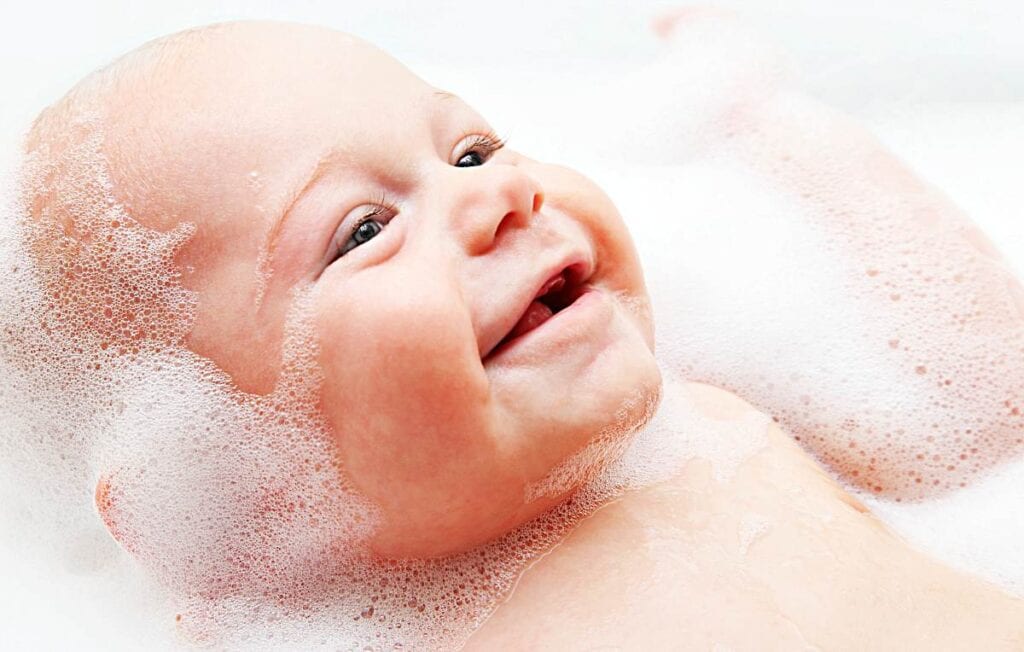
Baby dry skin solutions
There are multiple baby dry skin solutions that you can discuss with your pediatrician.
Depending on the cause of your baby’s skin dryness, you may need to use more than one remedy to ensure that they get adequate relief.
Giving your baby a bath that combines moisturizer and warm water can help to control their discomfort and hydrate their skin at the same time.
The bath should only be five to 10 minutes and you can do it every day. Once you are done bathing your baby, pat their skin dry using a soft towel and apply a moisturizer to their damp skin.
Choosing the right moisturizer is important for a baby’s sensitive skin. The following are possible options:
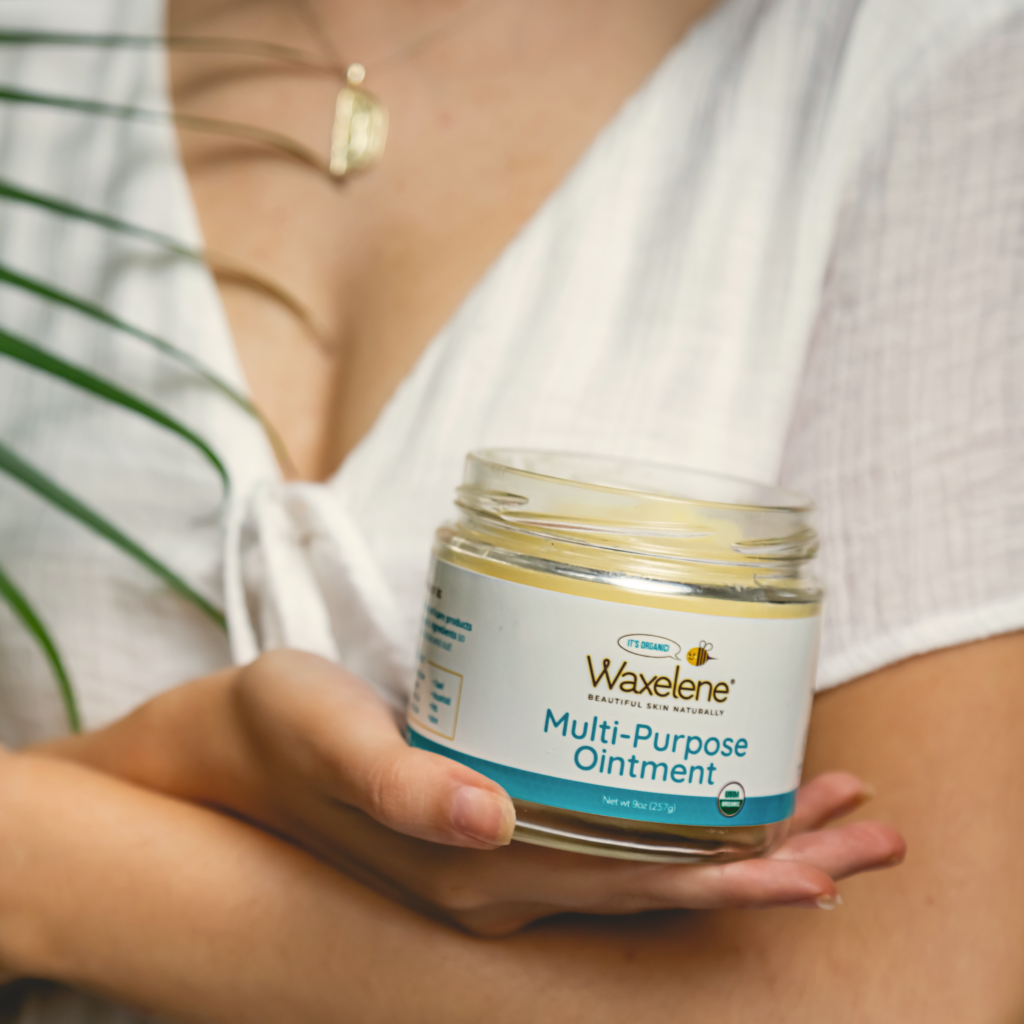
- Waxelene organic multipurpose ointment
- Olive oil
- Coconut oil
- Honey
- Yogurt
- Aloe vera
- Papaya
- Almond oil
You can also opt for an organic moisturizer that is formulated for babies such as our Multi-Purpose Ointment. This will contain gentle and natural ingredients that benefit their skin and nourish it while it provides much-needed hydration.
Certain things can promote dry skin for your baby, and you want to avoid these whenever possible. This is especially important if their dry skin is due to eczema.
These factors include:
- Harsh detergents and soaps (use organic options that are formulated for babies)
- Clothing fabrics that are nonbreathable and rough
- Excess saliva
- Fragrances (choose products that are fragrance-free)
- Sweat (keep your baby cool and dry)
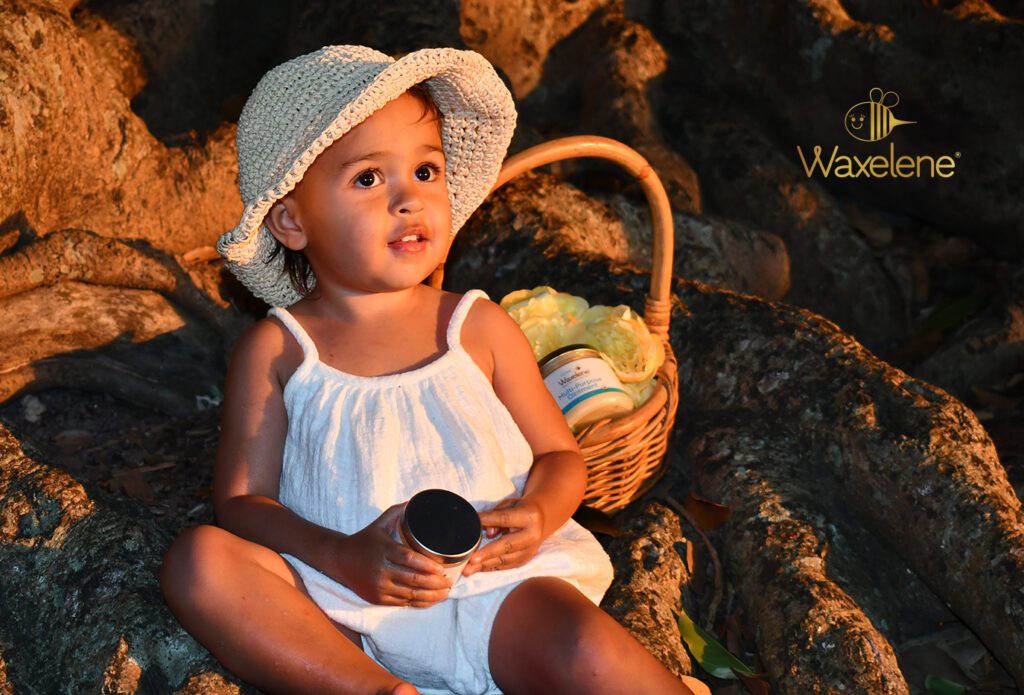
In areas where dry skin is severe, you can use a wet dressing on the area. Use the following steps:
- Bath your baby with moisturizer and warm water
- Pay the skin dry
- Put on a natural or organic moisturizer
- Wet some sterile gauze and gently put it on the area with severely dry skin
- Place a layer of dry sterile gauze on top of the wet gauze
- Leave the dressing in place for approximately three to eight hours
An oatmeal bath can help to soothe dry skin. It can be especially helpful if your baby is itchy from the dryness.
Use organic oatmeal that does not have any flavor to it. Prepare a warm bath and put the oatmeal into the water. Once the oatmeal has softened, you can put your baby in the bath for about 15 minutes.
Once you finish the oatmeal bath, make sure to rinse your baby’s skin well to remove the excess and apply a moisturizer once you pat them dry.
Oatmeal has antioxidants and it works to normalize skin pH to promote better general health while soothing it.
Since dry air can promote baby dry skin, using a humidifier in your home can be beneficial. It adds moisture to the air to reduce the risk of environment-related skin dryness.
If your baby’s skin is persistently dry, consult with their pediatrician. They can help to determine the underlying cause and give you some guidance on the best options for soothing baby dry skin.




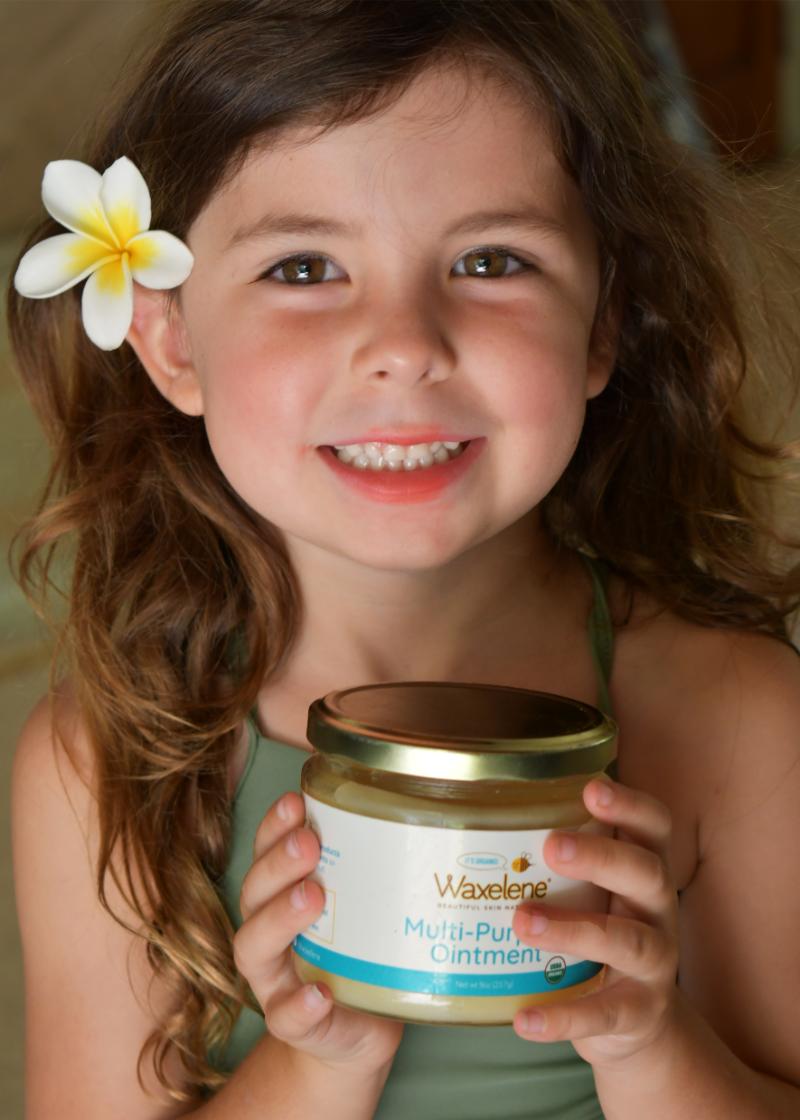
Thank you very much for sharing, I learned a lot from your article. Very cool. Thanks. nimabi